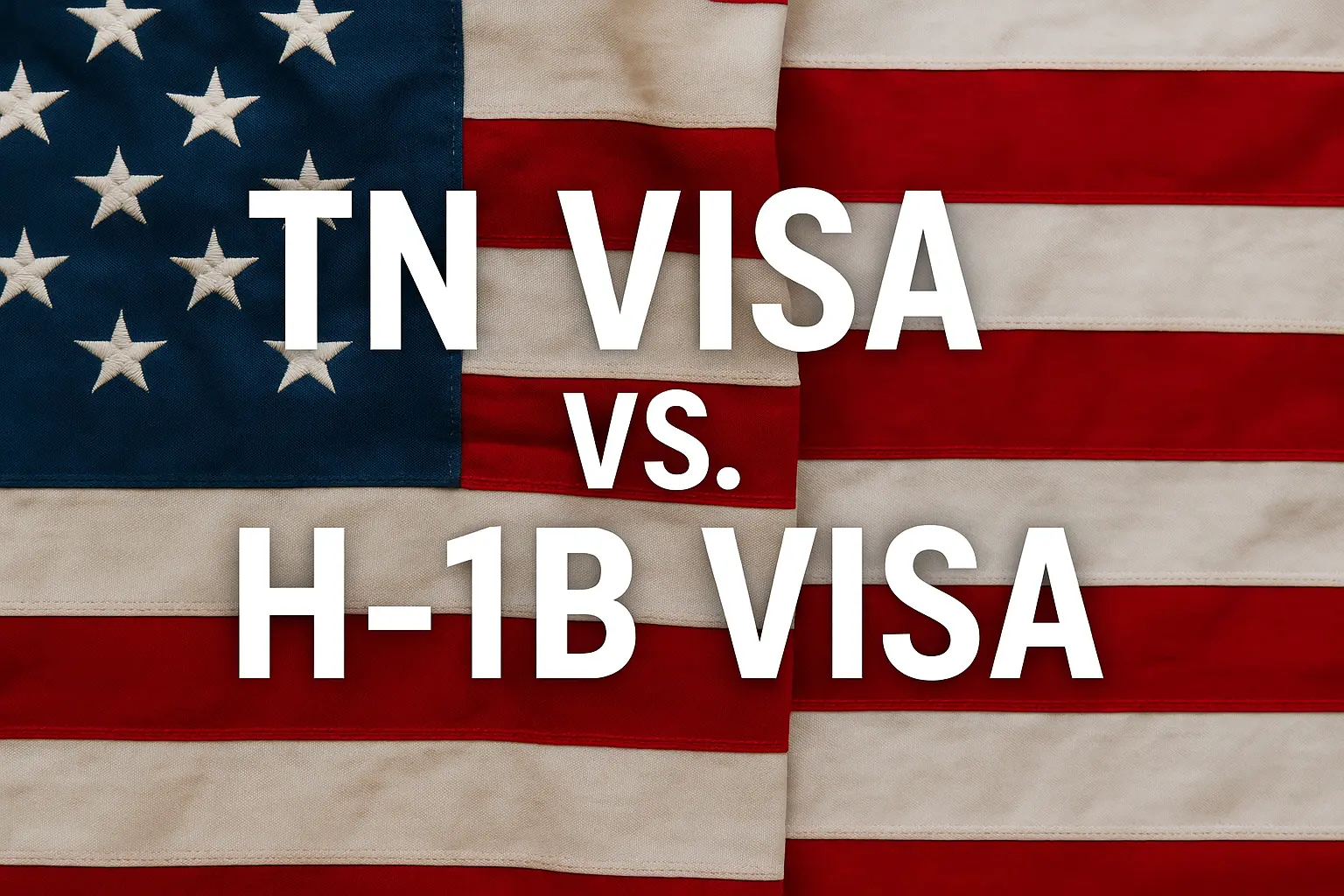TN Visa vs. H-1B: Which One Makes More Sense for Engineering Roles?
Introduction: The High-Stakes Decision for Engineering Talent Mobility
Imagine you’re the HR director of a large U.S. manufacturing company. Production is booming, contracts are piling up, and you urgently need specialized engineers to keep operations on track. The U.S. labor market, however, can’t supply enough qualified professionals fast enough. You’ve identified top-tier candidates from abroad — perhaps in Mexico or Canada — but now you’re facing a critical question:
Should you hire them through the TN Visa or the H-1B program?
This isn’t just a paperwork choice. It’s a decision that impacts costs, timelines, workforce stability, and long-term talent strategy. Get it wrong, and you might lose candidates to competitors or face compliance headaches. Get it right, and you’ll gain a competitive edge in securing global engineering talent.
This article dives deep into TN Visa vs. H-1B for engineering roles, exploring requirements, advantages, disadvantages, costs, timelines, and strategic considerations — all backed by data, real-world examples, and expert insights from the field of global mobility.
1. Understanding the Basics
Before comparing, let’s define the programs.
1.1 TN Visa Overview
The TN (Trade NAFTA) Visa is a non-immigrant work authorization under the United States-Mexico-Canada Agreement (USMCA). It allows Mexican and Canadian citizens to work in the U.S. in certain professional occupations, including multiple engineering categories.
Key facts:
-
Eligibility: Citizens of Mexico or Canada only.
-
Eligible professions: Engineers, accountants, scientists, teachers, and more (as per USMCA list).
-
Duration: Initially up to 3 years, renewable indefinitely in 3-year increments.
-
Employer requirements: Job offer in an eligible occupation; proof of qualifications.
-
Processing time: Days to weeks.
-
Cap limit: No annual quota.
1.2 H-1B Visa Overview
The H-1B Visa is a non-immigrant visa for specialty occupations requiring a bachelor’s degree or higher. It is open to citizens of any country, but subject to a strict annual cap.
Key facts:
-
Eligibility: All nationalities.
-
Eligible professions: Wide range of specialty occupations, including engineering.
-
Duration: Initially up to 3 years, renewable to a maximum of 6 years (with certain exceptions).
-
Employer requirements: Labor Condition Application (LCA), prevailing wage compliance.
-
Processing time: Months (due to lottery and petition process).
-
Cap limit: 85,000 new visas per fiscal year (65,000 regular + 20,000 for U.S. master’s degree holders).
2. Comparing TN Visa vs. H-1B for Engineering Roles
Let’s break down the comparison into eight strategic factors.
| Factor | TN Visa | H-1B Visa |
|---|---|---|
| Eligibility | Mexico & Canada only | Global |
| Annual Cap | None | Yes (lottery) |
| Processing Time | Days–weeks | Months |
| Cost to Employer | Low | High |
| Duration | Renewable indefinitely in 3-year increments | Max 6 years (with exceptions) |
| Path to Green Card | Indirect & tricky | Direct & common |
| Job Flexibility | Limited to listed professions | Broad specialty occupations |
| Ease of Renewal | Generally straightforward | Complex & time-limited |
3. Timelines and Recruitment Urgency
3.1 Why Time Matters in Engineering Projects
Engineering roles often tie directly to project deadlines, safety compliance, and production output. Delays in hiring can:
-
Push back launch schedules.
-
Increase overtime costs for existing staff.
-
Jeopardize contractual obligations.
3.2 TN Processing Advantage
A TN Visa can often be secured in under 2 weeks for Mexican citizens (via consular appointment) or same-day for Canadian citizens applying at the border.
Case example:
A U.S. automotive plant needed a Controls Engineer for a robotics installation. The Canadian candidate was identified on Monday, paperwork was ready by Friday, and they were working onsite the following week.
3.3 H-1B Delays
The H-1B process is slower due to:
-
Lottery selection (March).
-
Petition preparation.
-
USCIS adjudication.
-
Visa stamping (if abroad).
This means most new hires can’t start until October 1, the start of the fiscal year.
4. Cost Analysis for Employers
4.1 TN Visa Employer Costs
-
No government filing fee paid by the employer (Mexican citizens pay a consular fee).
-
Legal fees: $1,000–$3,000 (optional, for preparation).
-
No prevailing wage requirement.
Estimated total employer cost: Low thousands or less.
4.2 H-1B Visa Employer Costs
-
USCIS filing fees: $1,710–$6,460 (depending on company size).
-
Legal fees: $2,500–$5,000.
-
Mandatory prevailing wage compliance.
-
Training and education fee (ACWIA): $750–$1,500.
Estimated total employer cost: $5,000–$12,000+.
5. Stability and Long-Term Workforce Planning
5.1 TN Visa Stability
-
Renewable indefinitely, but no formal dual intent (can complicate green card sponsorship).
-
Renewals generally straightforward if role and employer remain consistent.
-
Risk: If the engineer leaves or changes roles, new TN petition is required.
5.2 H-1B Stability
-
Stronger pathway to permanent residency.
-
Dual intent allowed.
-
Fixed maximum stay unless green card process is initiated.
6. Candidate Pool Size
-
TN Visa: Limited to Mexico and Canada, but these countries produce a high number of highly qualified engineers.
-
H-1B: Global access to talent, including emerging tech hubs in India, Eastern Europe, and Latin America.
7. Compliance and Risk Management
TN Compliance
-
Employer must ensure the position matches an eligible USMCA occupation.
-
Degree or professional credentials must directly match the occupation.
-
Audits less frequent than H-1B, but still possible.
H-1B Compliance
-
LCA postings and wage compliance required.
-
Possible Department of Labor audits.
-
Higher public visibility of filings.
8. Strategic Recommendations
When TN Makes More Sense for Engineers
-
You need to fill the role quickly.
-
The candidate is from Mexico or Canada.
-
You have a cost-sensitive hiring budget.
-
The role matches exactly with the USMCA list of engineering professions.
When H-1B Makes More Sense for Engineers
-
The ideal candidate is not from Mexico or Canada.
-
You need long-term stability with green card sponsorship.
-
You have hiring flexibility for non-USMCA-listed engineering specializations.
9. Data Snapshot: Engineering Talent Gaps in the U.S.
According to the U.S. Bureau of Labor Statistics:
-
The U.S. will add 140,000+ new engineering jobs by 2032.
-
Civil, mechanical, and electrical engineers remain the most in-demand.
-
The engineering talent shortage is projected to cost U.S. manufacturers billions annually in project delays and missed contracts.
This talent gap underscores why fast and efficient visa strategies matter for businesses.
10. Real-World Example: TN vs. H-1B Decision Flow
Scenario:
A U.S. aerospace company has two equally qualified candidates for a Systems Engineer position:
-
Candidate A: Mexican citizen, degree in Aerospace Engineering.
-
Candidate B: Indian citizen, degree in Aerospace Engineering.
Outcome:
-
Candidate A → TN Visa (start in 2 weeks, low cost).
-
Candidate B → H-1B lottery registration (chance of delay until October).
11. Decision-Making Framework for HR & Hiring Managers
Here’s a quick framework to choose between TN and H-1B for engineering roles:
-
Nationality of candidate — TN is only for Mexico/Canada.
-
Urgency of hire — TN wins for speed.
-
Budget constraints — TN is more cost-effective.
-
Role alignment — TN requires strict match to USMCA list.
-
Long-term retention — H-1B offers clearer path to green card.
At 3A Immigration Services, we specialize in helping U.S. companies identify the fastest, most cost-effective visa strategies for engineering talent. Whether you’re looking to bring in a robotics engineer from Mexico on a TN Visa or navigate the complexities of an H-1B petition for a software engineer from India, we handle the process from start to finish — minimizing risk and maximizing your hiring advantage.
Contact us today to secure the right engineers for your projects — without unnecessary delays or expenses.
Choosing between the TN Visa and H-1B for engineering roles isn’t a one-size-fits-all decision. It depends on candidate nationality, job role, urgency, budget, and long-term workforce goals. The TN Visa shines when speed and cost are critical, especially for Mexican and Canadian engineers. The H-1B, while slower and more expensive, offers broader eligibility and stronger pathways to permanent residency.
The best decision is strategic, data-driven, and aligned with both immediate hiring needs and future growth plans. In a competitive engineering talent market, your ability to move quickly and choose the right visa channel can mean the difference between leading your industry or falling behind.





